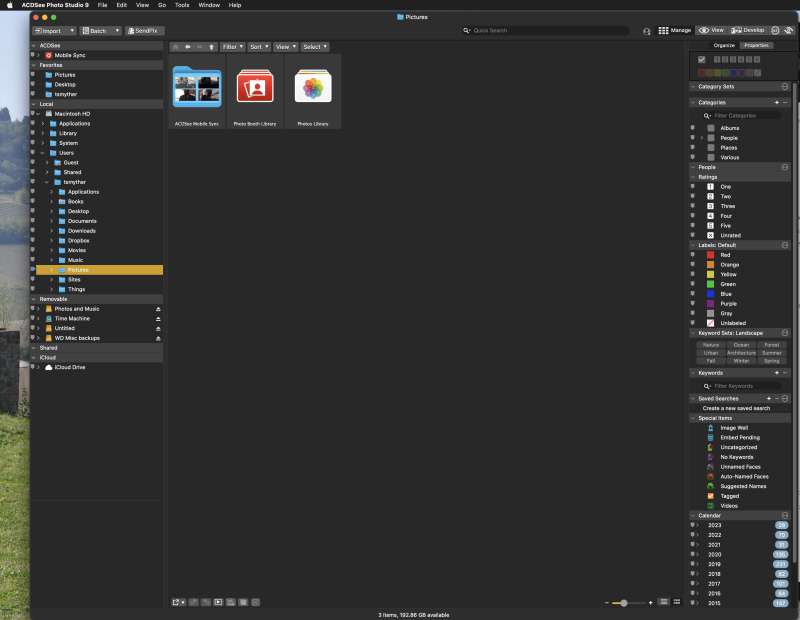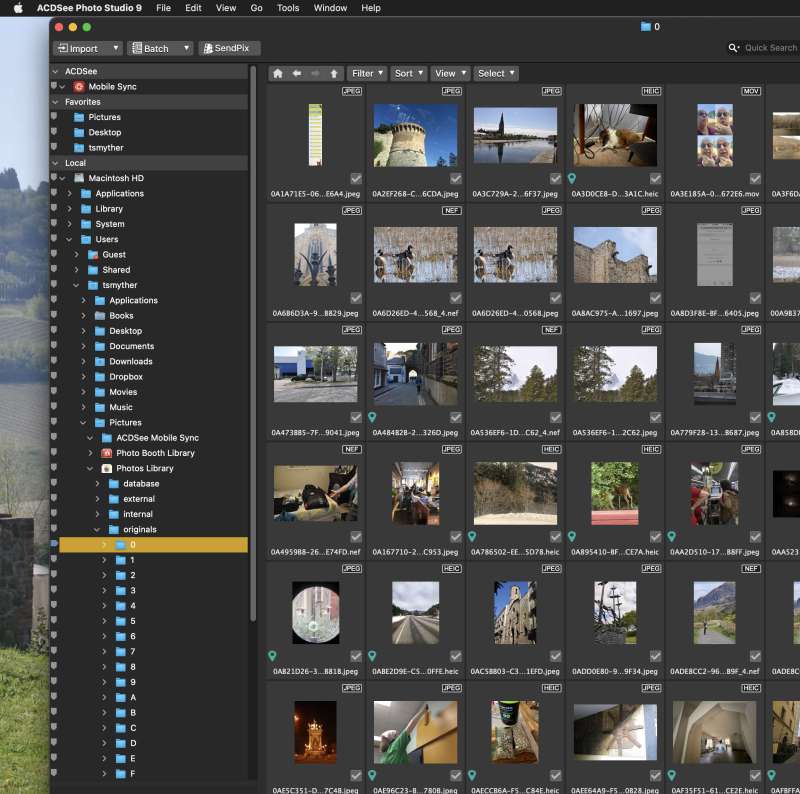
REVIEW – If you’re someone who cares deeply about the final quality of shots you take on your camera, you are probably using some sort of post-production software. It may just be cropping and a few tweaks in your computer’s photo software, or maybe you downloaded a photo-processing app. But if you’re serious, you’ll have a program that can catalog, edit, and manipulate your images. In the nearly 25 years I’ve had a digital camera that wasn’t part of my phone, I’ve gone through many such programs. I was pleased to be offered one that was new to me and would like to introduce you to it today. It’s from ACD Systems, and it’s called ACDSee Photo Studio for Mac 9. Let’s take a tour around.
What is it?
ACDSee Photo Studio for Mac 9 is a complete digital asset manager that allows you to control metadata, as well as manage and edit photos non-destructively.
Design and features
There is a lot here! I’m only going to give you the 50,000-foot view, but know that there is a whole lot more that could be written for each area, and it still wouldn’t be a full exploration. The company website and YouTube are full of great tutorials on this product. I don’t know if it will replace an Adobe Creative Commons license (which includes Lightroom and PhotoShop, arguably the standard bearers for photo management and manipulation, respectively), but for those who would rather buy once and have the product and learn all there is about it, you may be better served by ACDSee Photo Studio Pro. It’s also available as a subscription.

Setup
When you download and launch the ACDSee Photo Studio for Mac 9 software, you’ll enter the license code. This is managed on ACD’s website and is very straightforward. Once the license is set up, I never had another thought about it – until I did. During the course of my review, I upgraded my computer. This meant when I started up the new computer (with the migrated software and data from the old one), the license was already activated – on the old hardware. I could, however, see the old machine on their site, remove it, and activate it on my new machine. Total time? Maybe two minutes. Let’s not even try to compare this to transferring a software license for most of the other software vendors I have dealt with over the years. I’d still be contacting tech support with some of them!
Features
From product website
- Flexible organizational tools to satisfy any workflow
- Lightning fast non-destructive adjustments
- Drag and drop searching
- Sleek customizable batch presets
- RAW support for over 550 camera models
Performance
The ACDSee Photo Studio for Mac 9 software is fast and straightforward. (For the record, I’m running it on a Mac mini with an M2 Pro chip.) If you’ve never used anything other than the built-in photo program on your Mac or PC or mobile device, you may be a bit taken aback by what all you can do. Histograms (a way to look at the raw data of the color values in a given photograph) let you change the appearance of specific colors in your photo. While these are great ways to visualize the data of a given photograph, and even to edit it for a better look, it’s not for the faint of heart. Drawbars for exposure, shadows, high- and low-lights, etc. are more familiar, and these tools, compounded with layering, masking, and precision selection can also assist in your artistic vision.
Here is a sample of two shots using the basic filters: one straight from the camera, the other filtered through the software:


Interestingly, ACDSee doesn’t require you to “import” your photos. (This is probably the biggest difference between ACDSee and most other digital asset management tools.) You just go to a folder where your photos are stored (this can be in the sub-folders of your Photos library or on a different disk/server) and while you’re browsing them, the software is building a database of the metadata. This doesn’t replicate your actual photos (which means that any edits you are doing is on the original), just the data about them. You can create multiple databases for different photo sets if you would like. With this database, searching and filtering photos becomes faster. And, it cannot be overemphasized, all edits are non-destructive.
Randomly browsing through your Photos library is a bit strange, however, because the files are not grouped logically. In the photo below, there are photos from 2023 (bottom third from left), 2007 (bottom left), 2015 (second from left, top row), and 2012 (third from left, top row).

Another area of the ACDSee Photo Studio for Mac 9 software I found useful was the filter selection. We’ve all seen the dozen or so filters Instagram, Photos for iOS, Google Photos, or SnapChat offer to alter your photos. ACDSee offers more of them, available in a long list, or specifically for certain types of photos: landscape, portrait, food, etc. With a single touch, you can dramatically change your photo and then toggle back and forth between it and the original to see if you like the new look. You can also stack these effects in order to reach the creative end you are searching for with each photo.
What I like
- Non-destructive editing
- RAW photo support
- Approachable on many levels
- Great training and support, both from the company and through third parties
- Photo management
What I’d change
- There’s no way to make this easier, is there?
- It’s a deep subject, and you’ll never reach the end of it
Final thoughts
The cameras most of us carry around built into our phones are phenomenally good these days, so much of the time, we don’t really need to tweak the shots. If you’d told most people they could publish the pictures from their phones back in the early days of this century, they would have laughed out loud. But even this seeming perfection can be improved, and that is where image editing software comes into play.
At this price point, there are few players with the depth of tools and organization that can compare with ACDSee Studio. If you want a subscription, it is there along with others, but for a single-purchase product, there are few others to match it.
Regarding learning the product, there are many packages out there that have books, web tutorials, and active professionals using it and giving advice. I found this package less confusing in many ways than the suite from Adobe and the packages from Acorn and Pixelmator.
I have been playing with this product far past the deadline. I have added to this review, then realized I can’t cover an area better than the online help or tutorials do, and then delete it. Photo editing is a deep well. ACDSee offers a low-cost entry into this world. You can stay here and do more than you ever thought possible. But if you choose to move to other products, either personally or professionally, you will have learned standard concepts and techniques, and will only have to relearn small parts of the new interface. For most “prosumer” photographers, however, this may be all the photo editing/management software you will ever need.
Price: Currently $69.95 USD Full Price: $99.99 USD
Where to buy: ACD Systems website
Source: The sample of this product was provided by ACD Systems.



Gadgeteer Comment Policy - Please read before commenting
Sounds interesting but didn’t quite get how photos get organized from your description.
Also curious if it has any ML smarts to recognize faces, animals, objects, text in photos.
I am currently looking for a proper image organizing solution because ACDSEE Mac Studio 9 is not suitable for one major reason – the database cannot be changed. If your drive dies or you get a new computer, your work is dead.
The database restore feature only works on the same drive in the same location. This makes zero sense and now I’m out 40 plus hours of work I put into cataloging and adding keywords using this app and there is no solution to this, and I’m not starting over with them.
The only reason I’m particularly bent about this is support didn’t tell me this, made me purchase an update to the software to get support, then once I bought it they said they couldn’t help me.
Kinda sleazy, and I haven’t heard back from them about a refund.